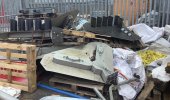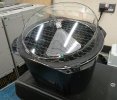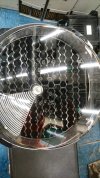MisterSheeps
Member
I went a walk today, that goes near the local line which has had some work done recently, and found a piece of paper in a field I was going to put in a nearby skip ... it was a 'signal information sheet' (the line has 4 aspect signals). It said the signal has no user serviceable parts, a 10 year life, the LEDs will last at least this period of time, if failure gives an alarm it should be replaced and returned for repair, and replaced after 10 years ...
(1) I thought electronics were rated as 'mean time between failures', so how can anyone specify a minimum life?
(2) Whatever happened to the idea that individual components should be replaceable? Binning the entire head (am assuming a signal in this context is the 4 aspect head) seems a nonsense.
(3) 10 years seems a short period of design life ...
(1) I thought electronics were rated as 'mean time between failures', so how can anyone specify a minimum life?
(2) Whatever happened to the idea that individual components should be replaceable? Binning the entire head (am assuming a signal in this context is the 4 aspect head) seems a nonsense.
(3) 10 years seems a short period of design life ...





